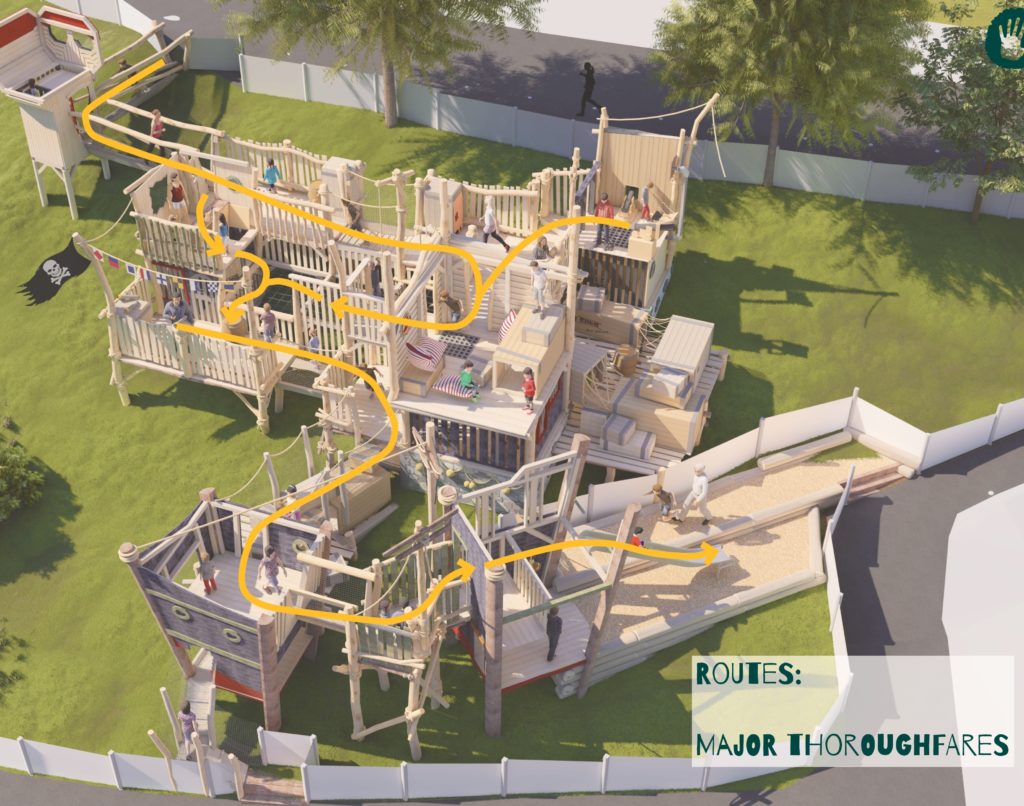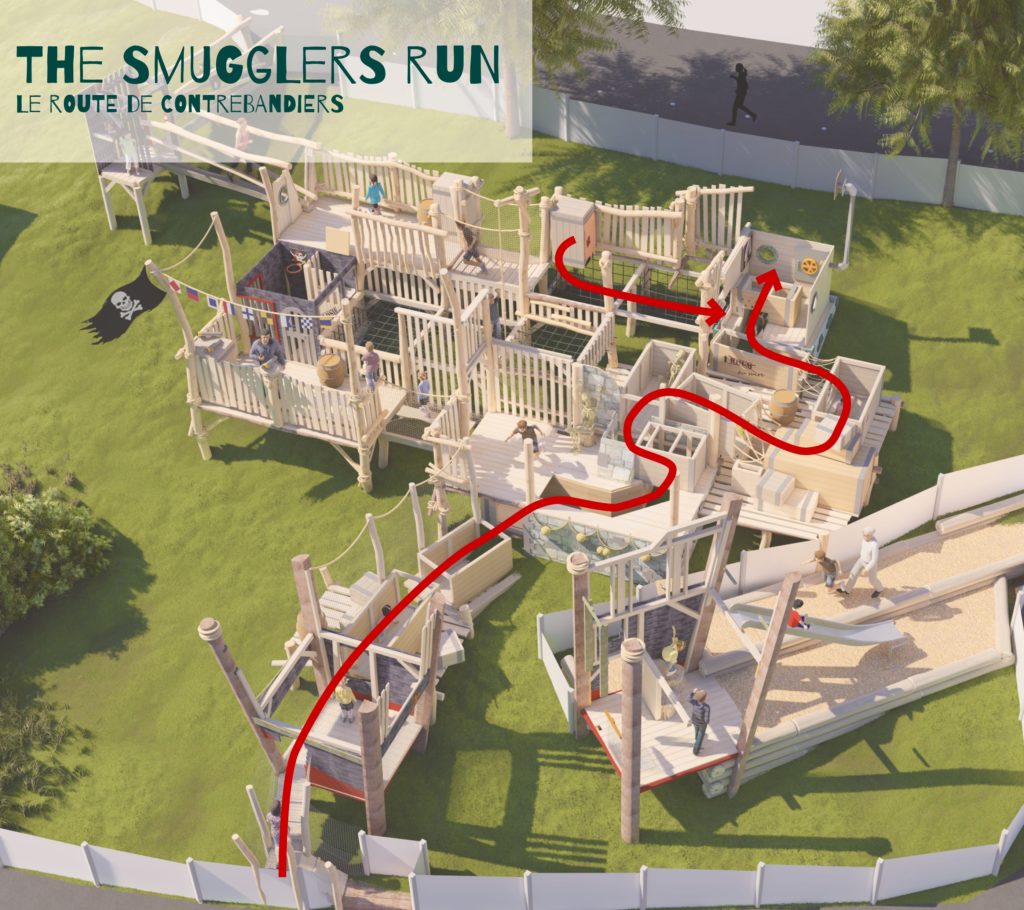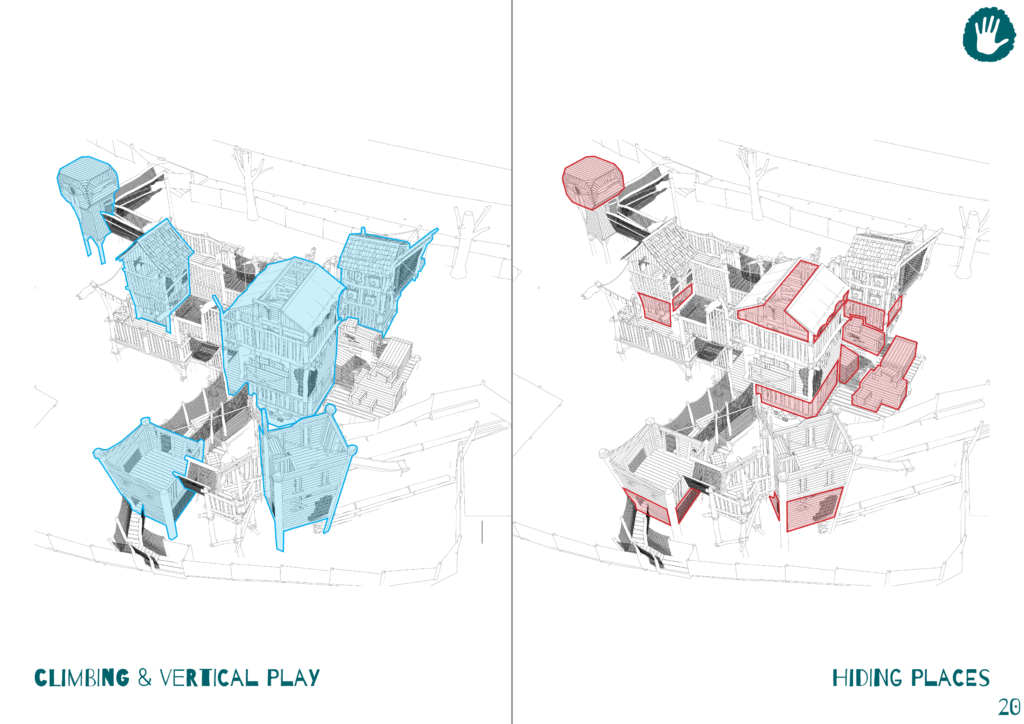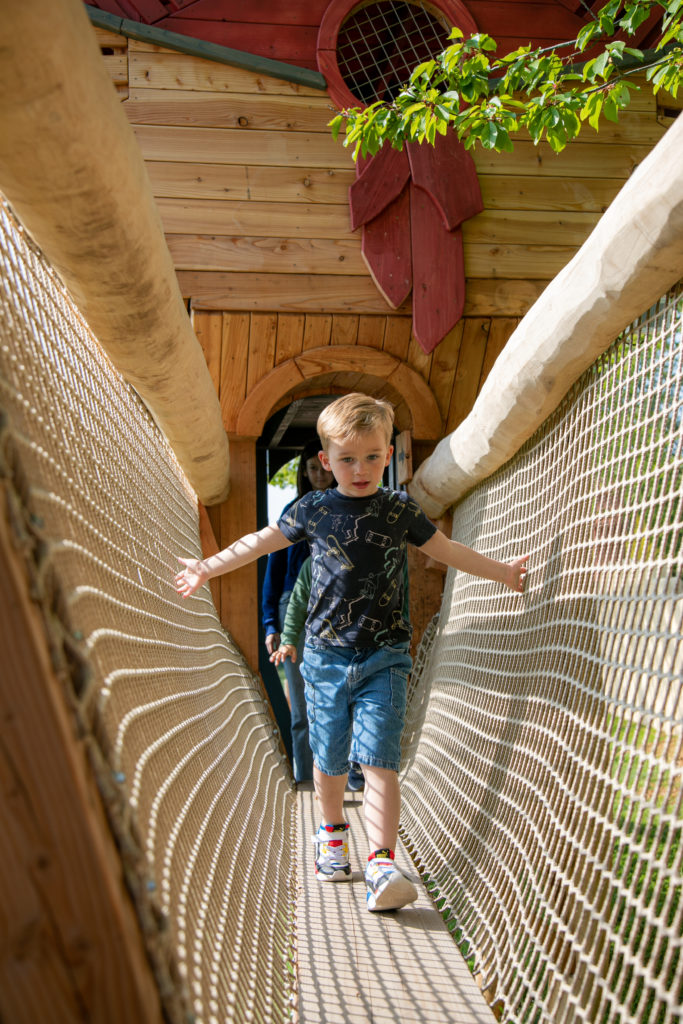Within the design of a playground is a delicate balancing act where our top priority is to keep adventurers safe and sound. However, we also recognise the importance of ‘risky play’ – a term coined by a professor Ellen B. Sandseter. We strive to design spaces which empower children to explore risk in a safe and supported environment.
Risky Play and Safety
Before and during the concept design process, we consider the risk-level our client wants their playground to offer. We brainstorm ideas and identify potential risks in an installation and we consult with inspectors from RoSPA. Their guidance helps us craft play areas where fun, safety and risky play go hand in hand.
But why isn’t it completely risk-free? The answer lies in the importance of risk-taking in childhood development. When children face challenges and overcome them, they build resilience and self-control. That’s why we incorporate the concept of risk into our Play Audits.
Take, for instance, a child choosing a more challenging route or climbing to greater heights on the playground. The reward for their bravery? Access to a special play feature! In Festyland, France, we designed the “Smugglers’ Run,” a thrilling route that leads to the “Hidden Dungeon”. Only those who dare crawl through secret passageways can unlock this adventure. By encouraging risky play in a controlled environment, we foster personal growth and independence.


Inclusivity
Inclusivity is another key aspect of our designs. In Festyland, we ensured that visitors of different age ranges and abilities can enjoy the playground together. Adults can join in on the fun by taking alternative routes while still sharing the experience with their children.
During a Play Audit we also audit capacity to see how many children can use the playground at once. We don’t want to create too many ‘bottlenecks’ – places that create crowding because only one child can use it at a time.

Festyland is a prime example of our dedication to creating high-quality bespoke play spaces that are enjoyable, safe, and inclusive. It’s a playground where children can make lasting memories while exploring in an environment that’s carefully managed for risky play. Read more in our full case study.
